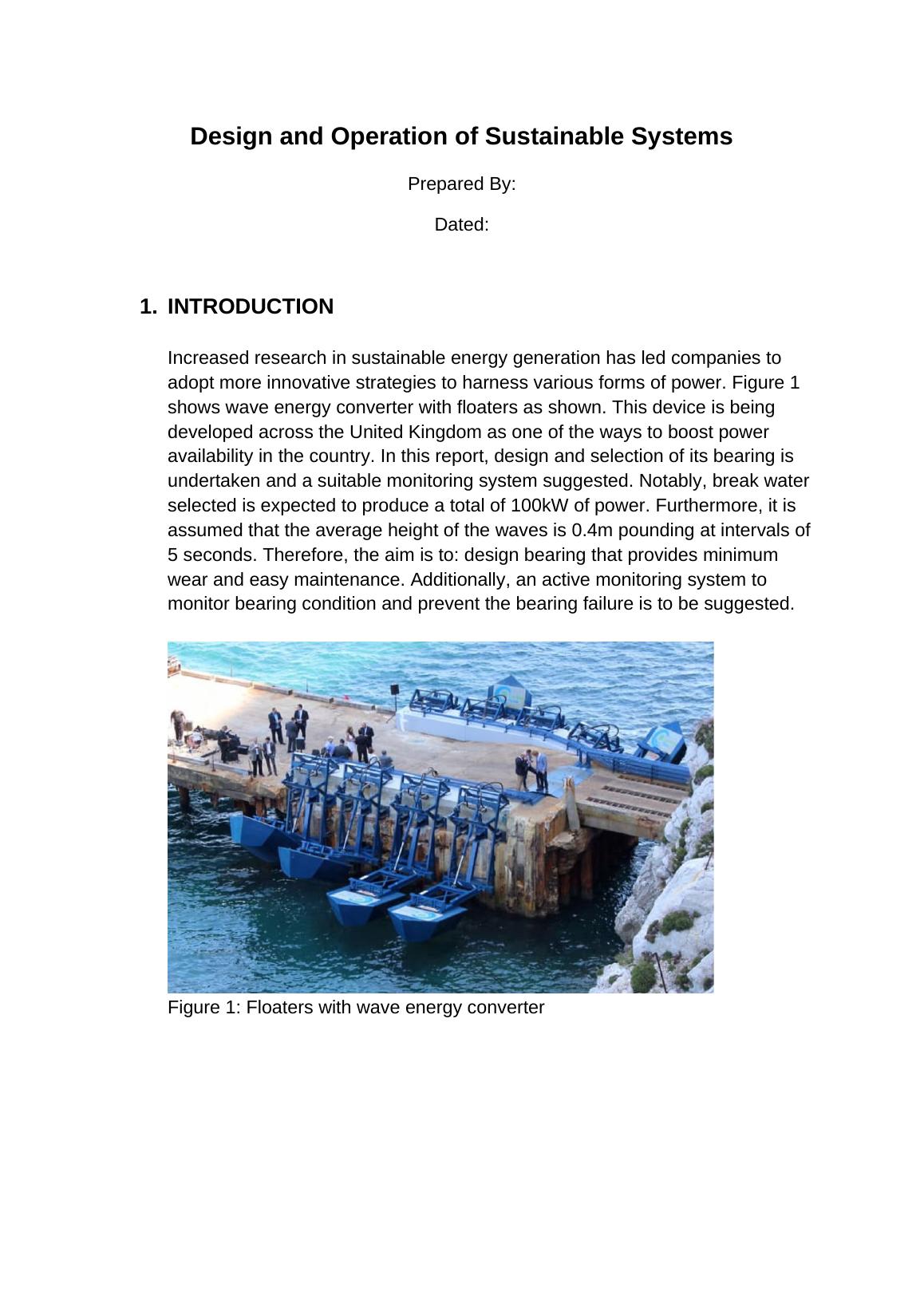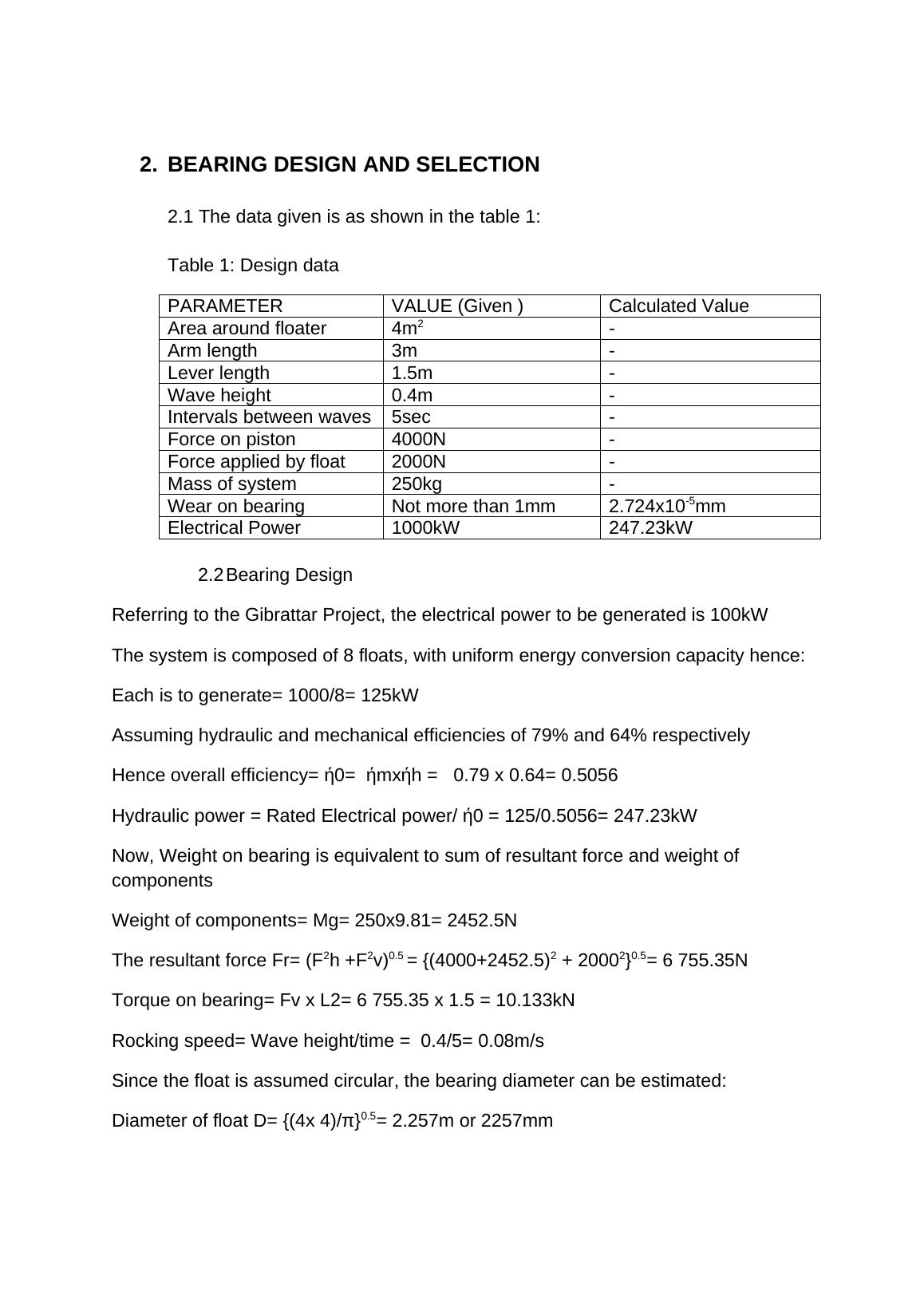Design and Operation of Sustainable Systems
Added on 2021-04-17
5 Pages1111 Words33 Views
Design and Operation of Sustainable SystemsPrepared By:Dated:1.INTRODUCTION Increased research in sustainable energy generation has led companies to adopt more innovative strategies to harness various forms of power. Figure 1 shows wave energy converter with floaters as shown. This device is being developed across the United Kingdom as one of the ways to boost power availability in the country. In this report, design and selection of its bearing is undertaken and a suitable monitoring system suggested. Notably, break waterselected is expected to produce a total of 100kW of power. Furthermore, it is assumed that the average height of the waves is 0.4m pounding at intervals of5 seconds. Therefore, the aim is to: design bearing that provides minimum wear and easy maintenance. Additionally, an active monitoring system to monitor bearing condition and prevent the bearing failure is to be suggested. Figure 1: Floaters with wave energy converter

2.BEARING DESIGN AND SELECTION 2.1 The data given is as shown in the table 1: Table 1: Design dataPARAMETERVALUE (Given ) Calculated Value Area around floater4m2-Arm length 3m-Lever length 1.5m-Wave height 0.4m-Intervals between waves5sec-Force on piston4000N-Force applied by float2000N-Mass of system250kg-Wear on bearingNot more than 1mm2.724x10-5mm Electrical Power1000kW247.23kW2.2Bearing Design Referring to the Gibrattar Project, the electrical power to be generated is 100kWThe system is composed of 8 floats, with uniform energy conversion capacity hence:Each is to generate= 1000/8= 125kWAssuming hydraulic and mechanical efficiencies of 79% and 64% respectivelyHence overall efficiency= ή0= ήmxήh = 0.79 x 0.64= 0.5056Hydraulic power = Rated Electrical power/ ή0 = 125/0.5056= 247.23kWNow, Weight on bearing is equivalent to sum of resultant force and weight of componentsWeight of components= Mg= 250x9.81= 2452.5NThe resultant force Fr= (F2h +F2v)0.5 = {(4000+2452.5)2 + 20002}0.5= 6 755.35NTorque on bearing= Fv x L2= 6 755.35 x 1.5 = 10.133kNRocking speed= Wave height/time = 0.4/5= 0.08m/sSince the float is assumed circular, the bearing diameter can be estimated: Diameter of float D= {(4x 4)/π}0.5= 2.257m or 2257mm

End of preview
Want to access all the pages? Upload your documents or become a member.
Related Documents
Design and Selection of Bearinglg...
|8
|1867
|75
